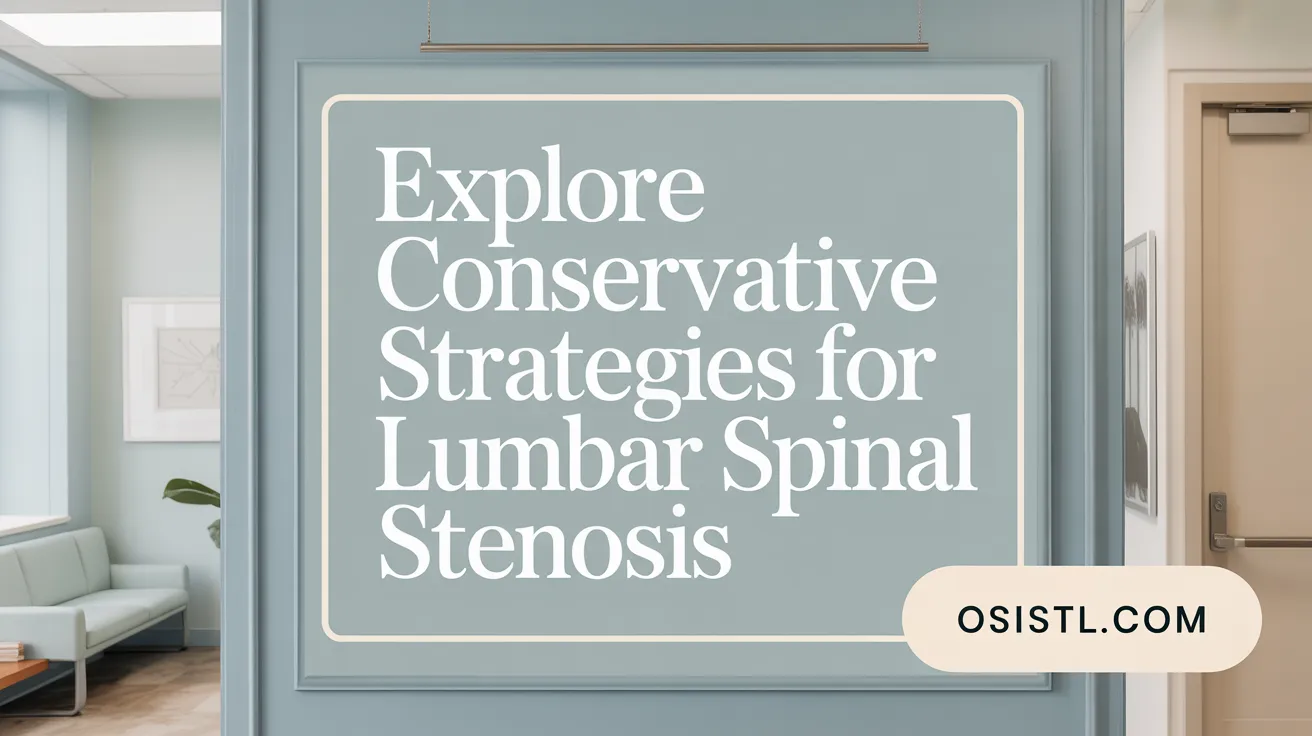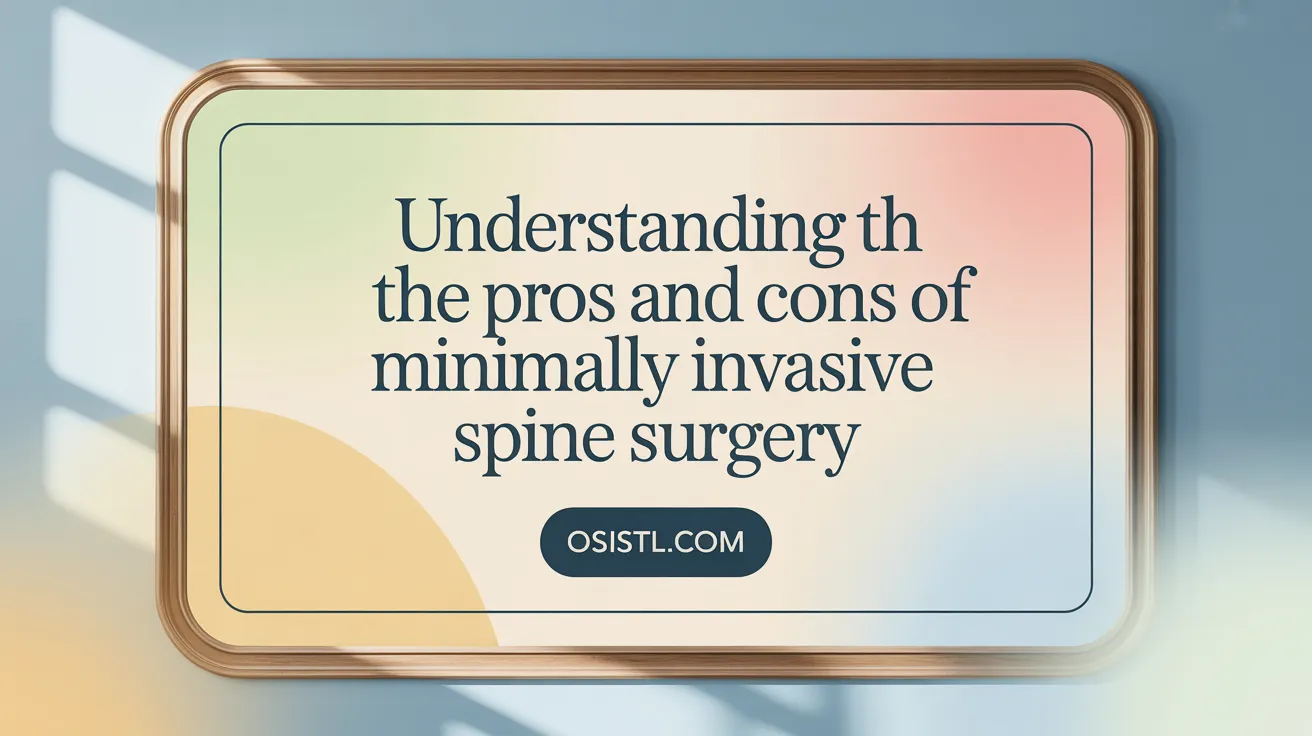Understanding Non-Surgical Approaches to Spine Care
Back and neck pain affect millions worldwide, yet surgery is often avoidable with effective non-surgical treatments. This article explores the range of conservative, minimally invasive, and alternative therapies designed to relieve spinal discomfort, improve function, and enhance quality of life without the risks and recovery time of surgery.
Comprehensive Non-Surgical Treatment Options for Spine and Back Pain
 Non-surgical and non-invasive treatments for spine and back pain form the first line of management for most patients. These options include physical therapy, which involves tailored exercise programs to strengthen the core, improve flexibility, and correct posture. Regular movement and specific exercises like Pilates, tai chi, or aerobic activities help reduce strain and support spinal health.
Non-surgical and non-invasive treatments for spine and back pain form the first line of management for most patients. These options include physical therapy, which involves tailored exercise programs to strengthen the core, improve flexibility, and correct posture. Regular movement and specific exercises like Pilates, tai chi, or aerobic activities help reduce strain and support spinal health.
Medications are also commonly used, including NSAIDs such as ibuprofen and naproxen to decrease inflammation and relieve pain. Muscle relaxants can reduce spasms, while neuropathic agents like gabapentin target nerve pain. Importantly, opioids are generally reserved for severe cases and used cautiously due to their risk of dependence.
Injection therapies, such as epidural steroid injections and nerve blocks, provide temporary relief by reducing inflammation or blocking pain signals in targeted areas. These are often guided by imaging techniques like fluoroscopy or ultrasound to ensure precision.
Lifestyle modifications play a crucial role in management. Maintaining a healthy weight reduces pressure on the spine, while smoking cessation improves blood flow and promotes healthier tissues. Dietary adjustments, particularly anti-inflammatory diets rich in fruits, vegetables, fatty fish, and nuts, can decrease overall inflammation and support healing.
Complementary treatments also contribute to comprehensive care. Acupuncture, chiropractic care, massage therapy, and mindfulness techniques like meditation or yoga can reduce pain levels and improve function. These approaches work by modulating neural pathways, reducing muscle tension, and enhancing overall well-being.
Collectively, these conservative therapies often provide effective symptom relief, enhance mobility, and prevent the need for surgical interventions. They are supported by current clinical guidelines and research, emphasizing a holistic approach to back and neck pain management.
Causes and Management of Chronic Back and Neck Pain
Chronic back and neck pain often stem from degenerative and structural conditions such as osteoarthritis of the spine, herniated or bulging discs, spinal stenosis, and myofascial pain syndrome. Other common causes include muscle strain, nerve compression, infections, tumors, osteoporosis, and congenital abnormalities. These issues may be exacerbated by lifestyle factors like poor posture, overuse, injury, aging, obesity, and elevated stress levels.
Patients typically experience a range of symptoms, including persistent dull or sharp pain, numbness, tingling sensations, weakness, and stiffness, which can significantly impact daily functioning and mental health.
Managing chronic pain effectively relies on a comprehensive approach. Initial treatments usually involve physical therapy focused on core strengthening, flexibility, and posture correction, complemented by medications such as NSAIDs and muscle relaxants. Heat or cold therapy, as well as lifestyle modifications—including weight management, quitting smoking, and reducing stress—play vital roles in pain reduction.
For cases where pain persists despite conservative measures, injection therapies like epidural steroid injections or nerve blocks may provide temporary relief. Emerging advanced therapies, such as neuromodulation or targeted drug delivery systems, are options for severe, refractory cases.
Prevention is equally important and includes maintaining good posture, engaging in regular physical activity, managing weight, and avoiding harmful habits. Proper diagnosis through imaging studies, coupled with patient education and lifestyle adjustments, can significantly improve long-term outcomes. In complex or severe scenarios, comprehensive evaluation and tailored treatment plans are essential to enhance quality of life and functional capacity.
Non-Surgical Management of Lumbar Spinal Stenosis
 Lumbar spinal stenosis (LSS) is a condition characterized by narrowing of the spinal canal, often due to degenerative changes in discs, facet joints, or ligament thickening. This narrowing can compress nerve roots, leading to symptoms such as pain, numbness, weakness, and tingling in the buttocks, legs, and feet, especially during walking or standing. While surgery is an option for severe, persistent cases, many patients can effectively manage their symptoms without surgical intervention.
Lumbar spinal stenosis (LSS) is a condition characterized by narrowing of the spinal canal, often due to degenerative changes in discs, facet joints, or ligament thickening. This narrowing can compress nerve roots, leading to symptoms such as pain, numbness, weakness, and tingling in the buttocks, legs, and feet, especially during walking or standing. While surgery is an option for severe, persistent cases, many patients can effectively manage their symptoms without surgical intervention.
Physical therapy plays a central role in non-surgical care. Therapists focus on core strengthening exercises to support the spine, posture correction techniques to reduce nerve compression, and stretching routines for the back and limbs. These strategies help improve mobility and reduce pain. Supportive devices like lumbar corsets or gait aids may be recommended to stabilize the spine and assist walking.
Medications are also useful in symptom relief. Non-steroidal anti-inflammatory drugs (NSAIDs) such as ibuprofen or naproxen help reduce inflammation and pain. Neuropathic agents like gabapentin and topical analgesics may further alleviate nerve-related symptoms. In addition, epidural steroid injections and nerve blocks are used to provide temporary relief by reducing nerve inflammation and interrupting pain signals.
Activity modifications are crucial; patients are advised to avoid activities that worsen symptoms, such as heavy lifting or prolonged standing. Instead, resting in positions that relieve pressure—like sitting or bending forward—can help manage pain.
These conservative measures can significantly enhance quality of life, improve walking ability, and often delay or eliminate the need for surgical procedures. Treatment plans should be tailored to each individual's symptoms and overall health status.
For more information, searching 'Non-surgical treatment options for lumbar spinal stenosis' can provide detailed guidance on this approach.
Minimally Invasive Spine Procedures: Benefits and Risks

What are minimally invasive spine procedures, their benefits, and potential risks?
Minimally invasive spine procedures (MISS) are advanced surgical techniques that use small incisions and specialized tools like endoscopes, tubes, and microscopes to treat various spinal conditions. Unlike traditional open surgery, these methods aim to reduce damage to muscles and tissues.
Common indications for MISS include herniated discs, spinal stenosis, spinal instability, deformities, infections, and tumors. Because of the less invasive nature, these procedures typically offer notable advantages.
The benefits of MISS are significant:
- Less tissue damage and scarring
- Reduced pain and blood loss
- Shorter hospital stays and quicker recovery times
- Smaller incisions and minimal muscle disruption
However, like all medical interventions, these procedures have potential risks:
- Infection at the incision site
- Nerve injury or damage
- Residual or incomplete symptom relief
- Bleeding or blood clots
- Reactions to anesthesia
Success is highly dependent on proper patient selection and the surgical expertise of the medical team. Surgeons experienced in minimally invasive techniques can better ensure favorable outcomes.
Examples of such procedures include endoscopic discectomy to remove herniated discs, radiofrequency ablation for nerve pain, and vertebroplasty or kyphoplasty to stabilize fractured vertebrae.
Alternative and Emerging Non-Surgical Therapies for Back Pain
 There are numerous natural and alternative options available for managing back pain, backed by varying levels of scientific support. Acupuncture is widely used and supported by evidence suggesting pain relief through stimulation of specific points on the body, which can activate neural pathways and promote anti-inflammatory effects. Massage therapy, including deep tissue and trigger point techniques, can help relieve muscle tension and improve circulation, often providing temporary symptom relief.
There are numerous natural and alternative options available for managing back pain, backed by varying levels of scientific support. Acupuncture is widely used and supported by evidence suggesting pain relief through stimulation of specific points on the body, which can activate neural pathways and promote anti-inflammatory effects. Massage therapy, including deep tissue and trigger point techniques, can help relieve muscle tension and improve circulation, often providing temporary symptom relief.
Chiropractic care, involving spinal manipulations, is popular among patients seeking relief from mild to moderate back pain. When performed by trained professionals, it can improve spinal mobility and reduce discomfort.
Practicing mind-body techniques such as meditation, deep breathing exercises, and biofeedback can address the psychological and emotional dimensions of chronic pain. These approaches may reduce muscle tension, decrease perceived pain severity, and improve overall well-being.
Physical activities like yoga and tai chi not only improve flexibility and strength but also foster relaxation and stress reduction, which are beneficial in managing chronic back pain. Evidence suggests that regular participation in these gentle exercises can significantly alleviate symptoms and improve function.
Dietary modifications focusing on anti-inflammatory nutrition are increasingly recognized as supportive treatments. Consuming foods rich in omega-3 fatty acids, fruits, vegetables, and whole grains, while avoiding processed foods and excess sugar, can help reduce systemic inflammation that exacerbates back pain.
Innovative therapies such as platelet-rich plasma (PRP) injections and stem cell treatments are emerging, aiming to promote tissue regeneration and healing of degenerated discs and joints. While preliminary results are promising, more research is needed to confirm their efficacy.
Neuromodulation techniques, including spinal cord stimulation, have advanced considerably. These involve implanting devices that deliver electrical impulses to nerves, altering pain signals directly and providing relief for chronic conditions unresponsive to other treatments.
Overall, many of these non-surgical options offer effective pain relief with minimal risks. Combining multiple approaches—such as physical therapy, lifestyle changes, and mind-body techniques—can enhance outcomes. However, it is essential to tailor therapies to individual needs and consult healthcare professionals for appropriate guidance, as the evidence for some emerging treatments is still evolving.
Embracing Non-Surgical Strategies for Spine Health
Non-surgical spine treatments encompass a broad array of conservative, minimally invasive, and alternative approaches tailored to individual patient needs. These treatments can effectively reduce pain, restore function, and improve quality of life while minimizing the risks associated with surgery. Early intervention with physical therapy, lifestyle changes, and targeted medications often prevents progression and promotes recovery. For conditions like lumbar spinal stenosis, conservative management is frequently successful. When surgical consideration arises, minimally invasive options offer less trauma and quicker healing. Complementary therapies such as acupuncture, mindfulness, and dietary modifications provide holistic support. As advances continue, integrating evidence-based non-surgical treatments remains central to comprehensive spine care, empowering patients to pursue lasting relief without surgery whenever appropriate.
